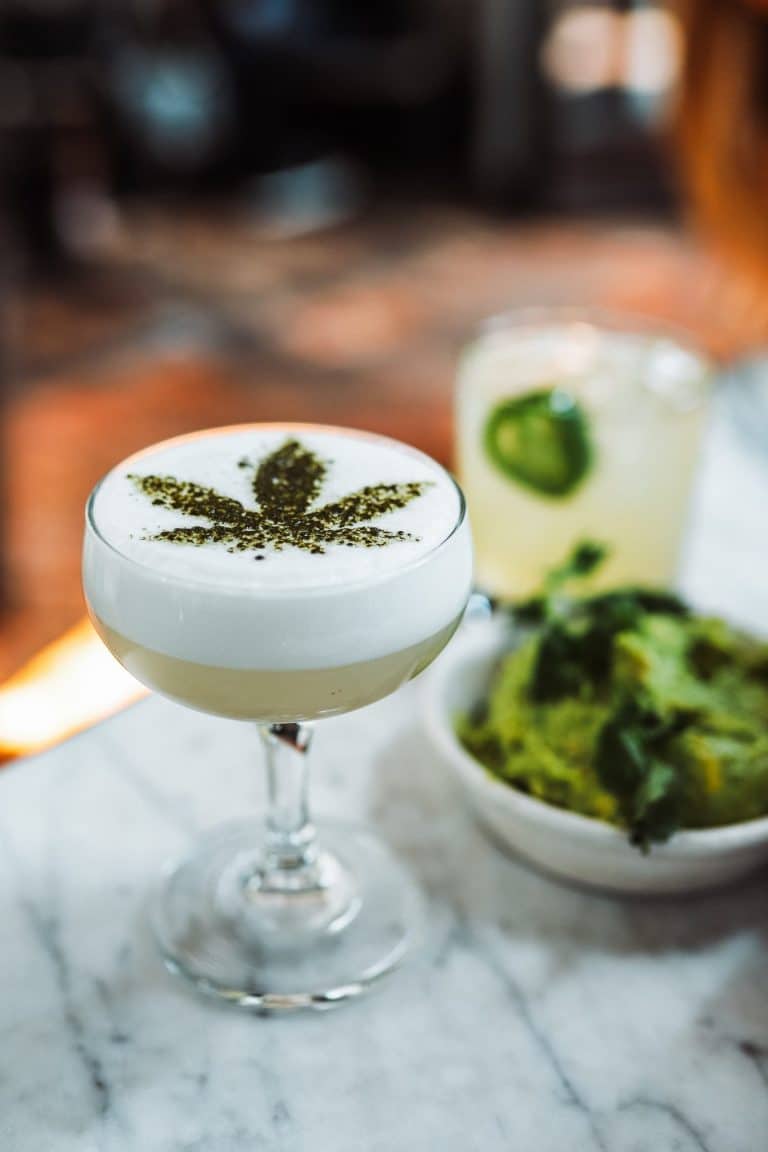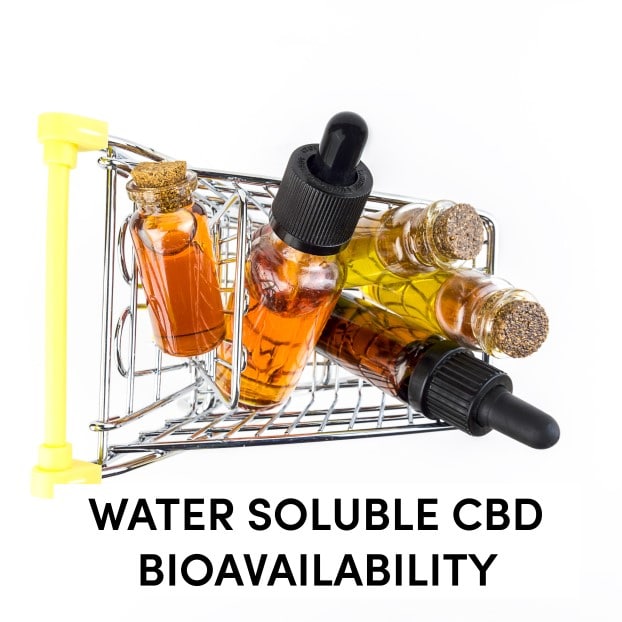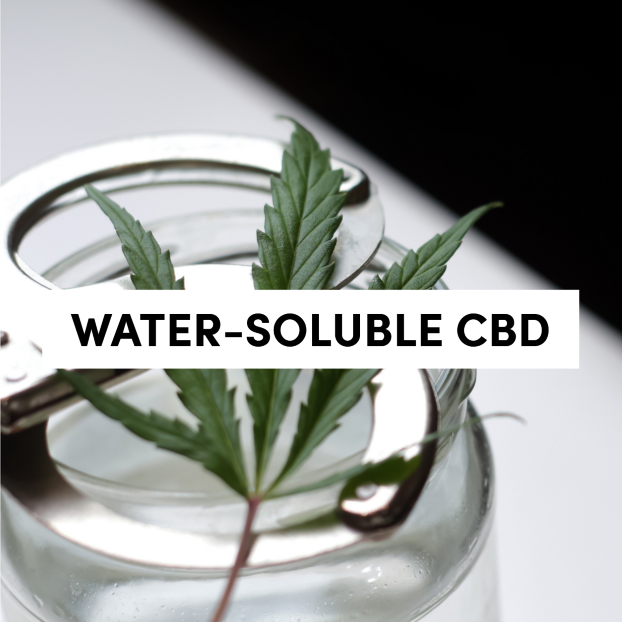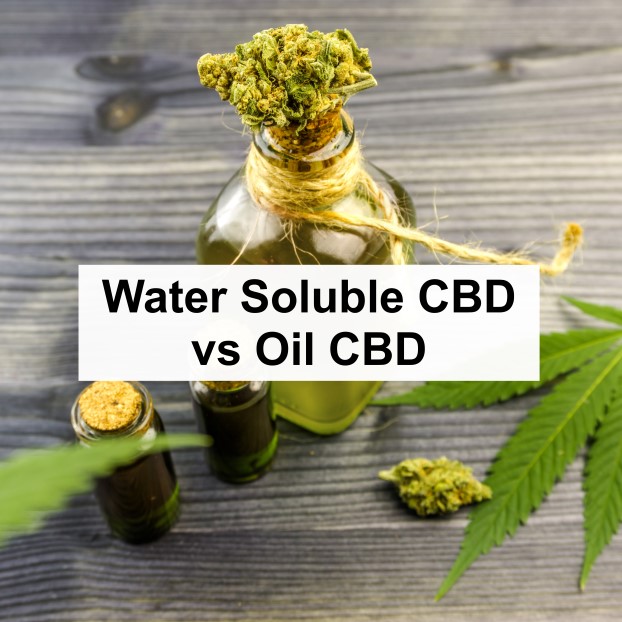Nanoemulsion CBD – The Next Big CBD?
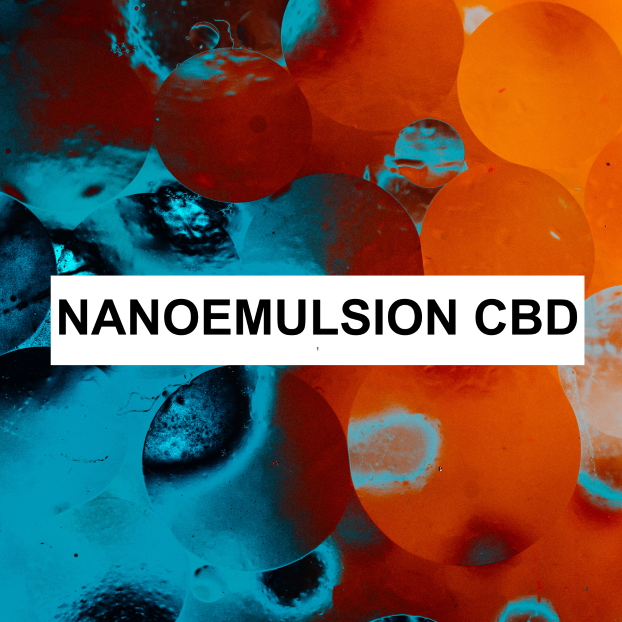
Posted on February 12th, 2021
One innovative step the cannabis industry took recently has been researching ways to make cannabinoids like CBD become water-soluble. If you know your cannabinoids rather well, you probably know that they come boned with oils and fats most of the time. Try mixing a tincture with coconut oil or a classic ‘canna-butter’ with coffee. What would happen? It just won’t work; CBD does not simply dissolve into water naturally. Well, that is unless we are talking about nanoemulsion CBD.
In this post, we will be looking at what water-soluble CBD and nanoemulsion CBD are all about and everything there is to know about emulsifying CBD. What is nanoemulsion CBD exactly? How do they make it? And what it’s its ultimate use? Read on to find out.
What’s Nanoemulsion?
An oil-in-water emulsion is a mixture where oil is the dispersed phase and water is the continuous phase. Meaning, some drops of oil dispersing around a larger liquid body, usually water. Most emulsions stabilize due to one or more surfactants, which can either be artificial or natural. These are useful for reducing surface molecular tension between liquids and oils.
Emulsions can either be of the nano, micro, or macro variety depending on the dispersed phase particle size. Nanotechnology has, in recent years, saw the development of an application for the nutrition and food industries. They sought to help solve issues relating to food consistency and bioavailability. That led to some very interesting results. Including water-soluble nanoemulsions of supposedly-healthy ingredients that users can mix into any type of beverage.
These emulsions come to be via the use of ultrasonic liquid processors. These are capable of breaking down the dispersed phase into 10 to 1,000nm droplets. It’s worth noting that these droplets measure as tinier than the standard range of macroemulsions (0.1 to 100µm). Thus, they are easier to carry through the body via different water-based compounds. Essentially, the tinier you can break a cannabinoid, the easier it’ll be for it to penetrate through tissues along with water.
Nanoemulsion CBD
Water-soluble cannabidiol comes to be through the process known as nanoemulsion, aka nano-emulsification. It involves using ultrasonic waves to shatter cannabidiol molecules into lots of tiny cannabidiol “nanoparticles”, which are fractions of the original size.
The fact that cannabidiol nanoparticles are tinier than normal CBD molecules, makes it easier for them to pass through mucous membranes in the esophagus and mouth. Both of those are thresholds that normal-sized cannabidiol molecules found in CBD oil cannot pass through as they are not tiny enough. Their ability to travel through such cellular membranes means that CBD nanoparticles take shortcuts into the bloodstream. Thus, they can circumvent the internal organs where cannabidiol molecules typically go to waste. That, therefore, means that nearly all the cannabidiol in a single dose reaches the user’s bloodstream and produces active effects.
It is worth noting that cannabidiol nanoemulsion also involves using emulsifiers. These are intermediary substances that force two generally-incompatible substances, like water and oil, to mix. Cannabidiol is a hydrophobic compound; it will never dissolve in water on its own. On top of that, it is also lipophilic, so it won’t dissolve in fats as well. But after reducing the size of cannabidiol molecules, most manufacturers are able to place the nanoparticles into a fatty emulsifier. As a lipophilic compound, the nanoparticles will dissolve in the fat before they reach the bloodstream. Thus, making it possible for cannabidiol and water found in our bloodstream to finally mix thanks to nanoemulsion CBD.
How Do They Make CBD Nanoemulsion?
As mentioned, water-soluble cannabidiol comes to be thanks to nanoemulsification’s use of ultrasonic waves to put pressure on cannabidiol particles.
The pressure exerted forces individual CBD particles to split into dozens of tiny CBD nanoparticles. The eruption means that their size reduces drastically. The resulting particles are so small the only way to measure them is in nanometers, a billionth of a meter. Said nanoparticles mix with an emulsifier, which serves as an intermediary to allows incompatible substances to mix.
CBD nanoemulsion is, as said before, water-soluble. It will, thus, dissolves into the bloodstream more efficiently and much faster than traditional CBD oil is capable of.
Equipment Used to Emulsify CBD
There are different pieces of equipment used to emulsify cannabidiol, but only two are the must-haves for the process. These are:
High Shear Mixers
High shear mixer heads generate radial, rotational, and longitudinal velocity gradients. These can break down large droplets into tiny droplets, disrupt the water/oil interface, and intermix the liquids. Emulsions made using high shear mixers remain stable for about 180 days.
Ultrasound Homogenizers
The effects produced by the acoustic cavitation-induced ultrasound enhances the disruption of droplets of oil. This facilitates the creation of stabler emulsions with tiny droplet sizes. Note that using high-amp ultrasonic processing can improve emulsions formed with high shear mixers. Depending on the kind of compound mixing, the emulsions permanently become stable CBD nanoemulsions through this method.
What Makes Nanoemulsion CBD Unique?
When compared to standard CBD oil, water-soluble cannabidiol gives users something of an improved way to enjoy the cannabinoid.
Oil and water don’t mix, and that’s not only true of how CBD-based oils behave when put in beverages or water. The same principle applies to CBD ingested by your body, which is generally made up of water. However, the fundamental problem with CBD that’s not water-soluble goes beyond whether or not it can dissolve in water or a beverage. It relates to whether or not the body can get the most out of it.
To serve its purpose, cannabidiol needs to dissolve and enter the bloodstream. As such, when you consume a non-water-soluble CBD product, it’ll behave like oil put on water. A droplet of the oil will coagulate and isolate itself from the rest of the liquid, refusing to dissolve and mix. Since the human body is around 60% water, it also resists mixing with, absorbing, and dissolving oil. As a result, a part of the content of CBD oil tinctures goes to waste since the body rejects it. Meaning, the fact that it is an oil form holds the body back from making full use of the cannabidiol oil.
The ultrasonic waves used to create water-soluble cannabidiol shrink the larger cannabidiol particles down to microscopic sizes. As nanoparticles, CBD particles dissolve into the bloodstream much faster.
Benefits of Water-Soluble Nanoemulsion CBD
Besides improved absorption rate, there are also a couple of more benefits to water-soluble, nanoemulsion CBD.
Water-Soluble CBD is Highly Bioavailable
Bioavailability refers to the nutrients in a product/compound available for the body to absorb. That said, it’s worth noting that different forms of cannabidiol offer different levels of bioavailability. The interesting thing is that cannabidiol oil, one of the most popular forms of CBD, has the least bioavailability. Studies found that a significant percentage of a dosage goes to waste as it fails to get into the bloodstream. CBD nanoemulsions, on the other hand, don-t have that problem. They have high bioavailability, which means more of the CBD will actually get into the bloodstream.
It Provides Consistent Dosing
Each capsule, pill, soft gel, or dropper includes a certain amount of cannabidiol. That offers you control over the amount of CBD you ingest, no need to guess or using a dropper to count. It will be the same, constant dose each time minus the hassle. CBD nanoemulsions make a more potent product. Even a small dose will give its full results and are easy to measure accurately.
Increased Convenience
Cannabidiol oil tinctures can’t mix with any water-based beverages due to the water and oil issue. However, that’s not the case with water-soluble cannabidiol. Water-soluble CBD dissolves in any beverage, be it wine, coffee, beer, cocktails, smoothies. You can add it into virtually any other water-based beverage you can think of, great news if you have a particular favorite.
Fast Acting Effects
Considering that cannabidiol won’t mix with water in the body, it will take longer for it to absorb it As a result, the effects of the cannabidiol tincture you consume might take some time to kick in fully. Water-soluble cannabidiol can instead dissolve into the bloodstream fast. Most water-soluble CBDs might take effect in a significantly shorter timeframe of a few minutes after taking.
Long Shelf Life
Innovative emulsification techniques allow for the creation of water-soluble CBD products with shelf lives of up to 2-years. That’s over twice the shelf life of a standard CBD oil.
With fast absorption rates that support bioavailability ratios close to those of intravenous administration and high physical stability, nanoemulsion CBDs seem set to take up considerable spots on the shelf of the CBD industry very soon and, like its absorption time, very fast. If you’ve been into CBD oil for some time, nanoemulsion CBD might be the next big-time for you.

